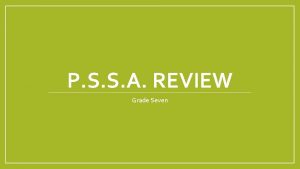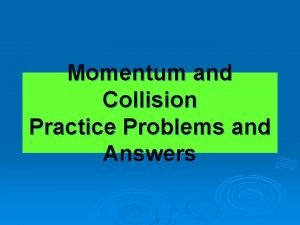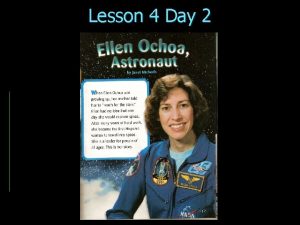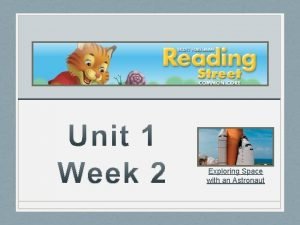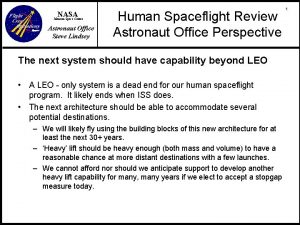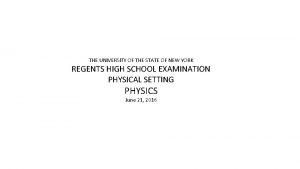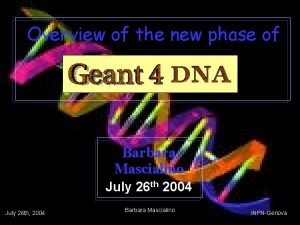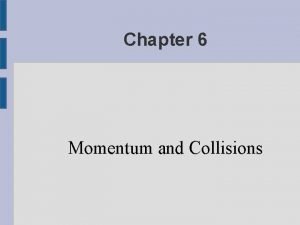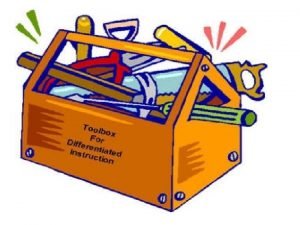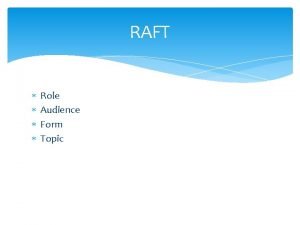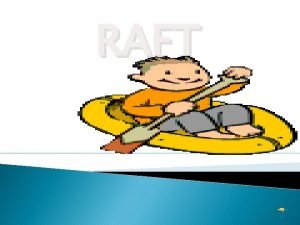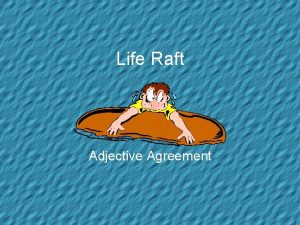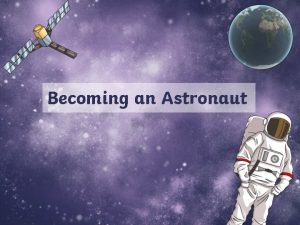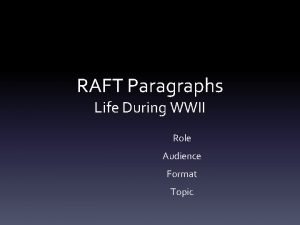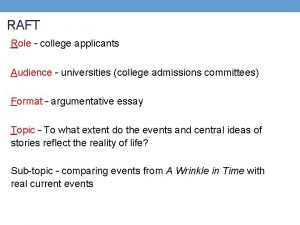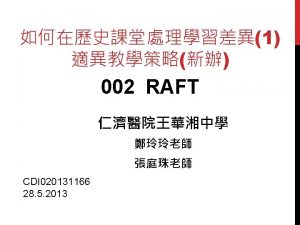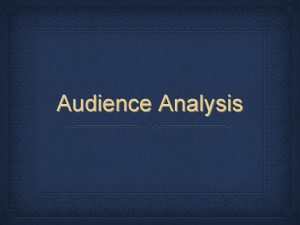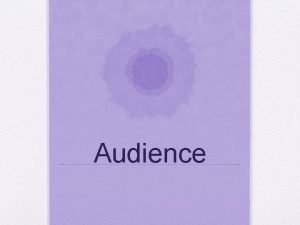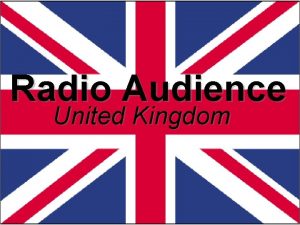RAFT JOURNAL R Role Astronaut A Audience People











- Slides: 11

“RAFT” JOURNAL: R – (Role) Astronaut A – (Audience) People on Earth F – (Format) A newspaper article T – (Topic) Why the moon IS/IS NOT a great place to live

THE MOON’S MOTION

THE FACES OF THE MOON • Rotates and revolves at the same rate • We always see the same side • Dark side is not same as the far side • They coincide at full moon • Far side has many craters, but fewer maria

THE MOON’S WAXING PHASES • Cycle begins at New Moon – moon is same direction as sun, cannot see it • Waxing Crescent – thin sliver on the right side of the moon • Cusps (“horns”) point away from sun • Earthshine (light reflecting off of earth to the moon and back) illuminates the shadowed part • First Quarter – terminator is straight up and down • Waxing Gibbous – the growth of the lighted part of the moon between the first quarter and full moon

THE FULL MOON – HALF WAY THROUGH THE CYCLE • Rising of the full moon = same time as setting of sun, and vice versa • Harvest Moon – helped farmers gather crops after sundown • (Sept. in N. Hemisphere/March in S. Hemisphere) • Hunter’s Moon – fields are clear of vegetation and hunters can spot game animals more easily • (one month after harvest moon)

THE MOON’S WANING PHASES • Waning Gibbous – darkness appears on the right side • Last Quarter – terminator is straight and darkness covers the right side • Waning Crescent – moon slowly goes out of sight

THE MOON’S ORBIT • Elliptical • Perigree – closest • Apogee - farthest • Moving away • 3. 8 centimeters per year • Period (time to travel around Earth) of 29. 5 days when viewed from earth

SOLAR ECLIPSES • When the moon comes between the earth and the sun • Total eclipse = when the moon covers the sun’s entire disk • Happens if the umbra (darker part of moon’s shadow) reaches earth’s surface • Partial eclipse = when the moon covers part of the sun’s disk • Happens if the viewer is in the moon’s penumbra • Annular eclipse = a ring-shaped portion of the sun’s disk shows around the moon • Happens at apogee

https: //www. youtube. com/watch? v=81 on 2 Es. R_k. E#action=share

SOLAR ECLIPSE • Baily’s beads – pinpoints of light caused by sunlight shining through valleys at the moon’s edge • Diamond ring effect – when a bright bead of light is visible while the rest of the solar crescent remains thin • The effect: sky is darkened, temperature drops, some bright stars become visible • Totality lasts from an instant to 7. 5 minutes

LUNAR ECLIPSE • https: //www. youtube. com/watch? v=l. Ni 5 UFpales • When the moon passes into the earth’s shadow • If it goes through earth’s umbra = total eclipse • If it goes through earth’s penumbra = partial eclipse • Longest time it can be in earth’s shadow is one hour and forty minutes, but time varies
 Invoked audience
Invoked audience Which sentence uses commas correctly the former astronaut
Which sentence uses commas correctly the former astronaut Two campers dock a canoe
Two campers dock a canoe How was ellen ochoa childhood
How was ellen ochoa childhood Honeywell aerospace engineer salary
Honeywell aerospace engineer salary Astronaut
Astronaut Steve lindsey astronaut
Steve lindsey astronaut A blue lab cart is traveling west
A blue lab cart is traveling west Petalite astronaut
Petalite astronaut An 82 kg man drops from rest
An 82 kg man drops from rest Grasps stands for
Grasps stands for Role audience format topic examples
Role audience format topic examples

